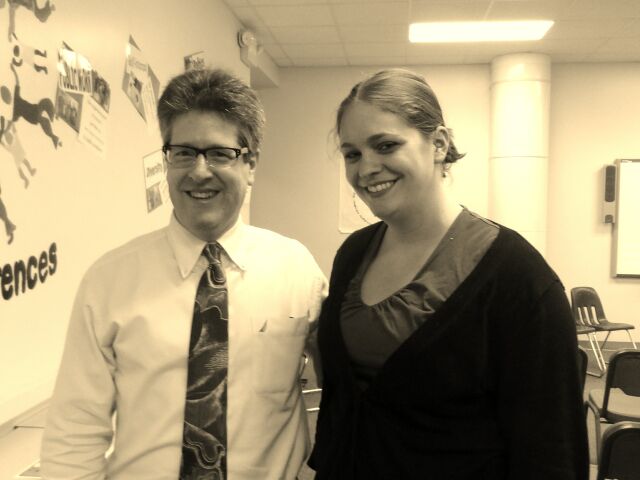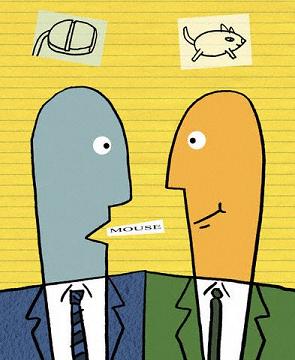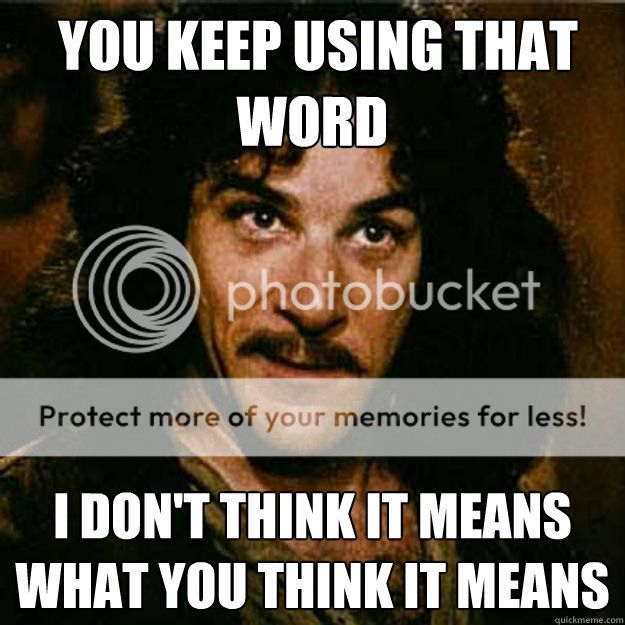By: Harry Boyte and Jen Nelson
What do 21st century freedom movements look like?
There are still tyrannies where oppressors have a face and name. But the more difficult freedom struggles of our time may be those involving patterns of control animated by good intentions, clothed in the garb of science. High stakes testing, government regulations on sugar contents in food, and an ever-expanding number of other areas in which experts direct, or more gently "nudge" in the phrase of former Obama adviser Cass Sunstein, are cases in point.
Public Achievement in Fridley Middle School, just north of Minneapolis, offers a striking example of a freedom movement transforming subtle domination. In a Federal Setting III program, Project Star, "citizen teachers" Michael Ricci and Alissa Blood have changed special education into an empowering learning environment.
 Michael Ricci and Alissa Blood
Michael Ricci and Alissa Blood
Kids take the lead in designing their own learning, built around largely self-directed public work projects of their own choosing. In the process, students labeled "EBD," subject to what are called "Emotional and Behavior Disorders," and "OHD," or "Other Health Disabilities," have become community leaders. "In all the other classes, the teachers tell you what to do," says 7th grader Whitney, in a video about
Fridley Public Achievement called "Real Power." "In PA, the teacher says okay, what do you want to do?"
According to the Wikipedia definition, special education is designed for "the education of students with special needs in a way that addresses the students' individual differences and needs." Students with "OHD" are also in the Project Star because of behaviors that often interrupt the general education classroom.
The problem, as the Wiki definition of "EBD" also notes, is that "both general definitions as well as concrete diagnosis of EBD may be controversial as the observed behavior may depend on many factors."
Put differently, is the "problem" the kids or their environment? "The kids in our special education classroom weren't successful in mainstream classrooms, where the format has been the same for the last 100 years," explains Ricci. "The world has changed, but the classroom is pretty much the same."
Susan O'Connor, director of the Special Education graduate program at Augsburg College, wanted to try something different. "Special Education generally still uses a medical model, based on how to fix kids," she said. Working with Dennis Donovan, national organizer for Public Achievement with the Center for Democracy and Citizenship, O'Connor and other faculty and graduate students at Augsburg partnered with Ricci and Blood, graduates of their program, to design an alternative.
They created an experimental adaptation of the youth civic empowerment and education initiative called Public Achievement. Public Achievement was founded in 1990 by Harry Boyte as a contemporary version of the Citizenship Education Program (CEP) during the civil rights movement, which had shaped him as a college student. CEP taught African-Americans, and some poor whites as well, skills and concepts of constructive change. The experiences had often dramatic impact on identity, shifting people from victim-hood to agents of change and civic role models for the nation.
In Public Achievement, young people learn the skills, concepts and methods of empowering public work. They work as teams guided by coaches, who may be young adults, college students, or teachers. Coaches help guide the work but do not dominate. They also are highly attentive to the development of young people's public skills and capacities. The initiative has spread widely, now used in schools, colleges, and communities in the United States and many other societies, including Poland, the West Bank and Gaza, Israel, and Northern Ireland.
Both Ricci and Blood believed that an approach which gives students the chance to take leadership in designing their own learning was worth a try. "The idea of trying something different that might give school a purpose for our kids just made sense," Blood explained. Public Achievement offered resources.
In the self-contained Project Star classroom, where the primary concern is to teach students strategies that help them manage disruptive behaviors that interfere with learning in school, there is latitude for innovation. "More evidence would be needed [in a mainstream classroom] to allow us to go to the level we did, where we turned Public Achievement into a core part of the curriculum," Blood described.
As a result of the PA experiment, Setting III students who in many schools are confined to their classes became public leaders. They built relationships and received recognition not simply in the school, but also in the larger Fridley community.
Their Public Achievement work brought them into contact with school administrators, community leaders, elected officials, and at times media outlets like the
local paper and Minnesota Public Radio. Kids once labeled "problem students" are becoming
known as "problem solvers."
The PA approach also transformed the work of Ricci and Blood.
"My role is not to fix things for the kids but to say, 'this is your class, your mission. How are you going to do the work? Our main task is to remind them, to guide them, not to tell them what to do," explains Ricci.
The teachers became partners with their students, who choose the issues and learn how to work to address them effectively. Issues this last year included rewriting the school's bullying policy, hosting a district wide "Kindness Week" to reduce bullying, making murals to motivate peers to get exercise, visiting children in hospital waiting rooms, and educating the public about misconceptions regarding Pit Bulls.
Such work creates multiple opportunities for students to develop academically if teachers are intentional about making the connections. Students compose well-written letters to seek permission from the principal for a project. They use math to figure out what scale their mural will be so they know how much wall space they need.
Teachers also change -- from "teaching to the test," to working alongside young people as they develop. Their curriculum builds citizenship skills and habits such as negotiation, compromise, initiative, planning, organizing, and public speaking. It also develops what Blood calls "a public professional persona."
Both teachers are convinced that these skills, habits, and civic identity will serve the students well throughout life.
The change in the young people, eloquently described in their own words in the "Real Power" video, is inspiring. So is the new model of "citizen teacher" which Michael Ricci and Alissa Blood are pioneering.
In an educational environment today where teachers feel powerless, they are forging an alternative in which educators reclaim teaching as a great civic vocation. They are also helping to create a freedom movement not only for the students but for themselves, in which teachers and students are agents and architects, not objects, of educational reform.
Harry Boyte is Director of the Center for Democracy and Citizenship at Augsburg College and a Senior Fellow at the University of Minnesota's Humphrey School of Public Affairs. Jennifer Nelson is Producer and Director of "Real Power," and a graduate student in public policy at the Humphrey School of Public Affairs.
 Nurse-practitioners can provide many medical services, especially in primary care and women’s health, and could therefore help fill the doctor shortage gap. Moreover, as provisions of the Affordable Care Act move forward, nurses will be increasingly called upon to improve care coordination, help reduce medical errors and avoidable rehospitalizations, and improve transitions and handoffs.
Nurse-practitioners can provide many medical services, especially in primary care and women’s health, and could therefore help fill the doctor shortage gap. Moreover, as provisions of the Affordable Care Act move forward, nurses will be increasingly called upon to improve care coordination, help reduce medical errors and avoidable rehospitalizations, and improve transitions and handoffs.











